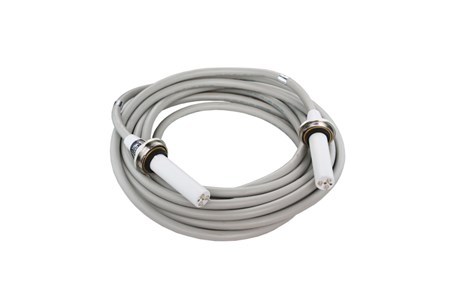Briefly describe the process of replacing the high-voltage cable of the X-ray machine
The high-voltage cables of X-ray machines are often twisted during use, which can easily be broken down and damaged, and repairs are also difficult to master.
1 Reasons for damage to high-voltage cables
(1) Long-term exposure to damp or long-term exposure to ultraviolet rays causes rubber to be aging, and the insulation strength is reduced to cause breakdown.
(2) The quality of the high-voltage cable is poor, the thickness of the rubber layer and the core wire is not uniform, the cutting is accidentally damaged during assembly, the rubber is burned during welding, the surface is not cleaned thoroughly and the discharge is caused, and the core wire and the plug are poorly welded.
(3) The insulating strength of the filled filler is low, causing breakdown.
(4) Frequent twisting, hard folding or heavy pressure can damage the insulation layer and cause breakdown.
(5) There is no surge resistance or damage to the surge resistance, and the high-voltage cable of the self-rectifying X-ray machine is easy to break down.
(6) The rectifier tube is leaking, and the leakage is short-circuited and breakdown.
(7) Corroded by gasoline and transformer oil, rubber swells, and insulation decreases. In view of the reasons for the damage of the above high-voltage cables, the following introduces some matters that should be paid attention to when repairing the high-voltage cables and methods to prevent further damage in the future.
2 Improve maintenance process
(1) Do not use a sharp knife to cut excess (thick) insulating rubber to avoid knife injuries. And use a wooden file to file the rubber layer of the high-voltage cable sequentially, and do not file the cable with a file that has filed metal materials to prevent metal particles from invading the insulating rubber layer, causing high-voltage static electricity, and piercing the high-voltage cable rubber and cable plugs.
(2) The grounding grid of the high-voltage cable should be fixed on the plug of the high-voltage cable reliably to avoid static ignition caused by virtual welding. Before welding, the welding place should be cleaned and a layer of tin should be applied. The welding speed should be fast to avoid scalding the insulation. Hidden breakdown caused by rubber
(3) For high-voltage cables that have been used for a long time, the root of the cable plug seat is bent due to aging and the quality of the cable. Therefore, the breakdown part often occurs in those places where the force is bent. It can be in the plug seat during maintenance. A steel sleeve is added to the upper end to reduce the breakdown damage caused by the bending of the cable root
(4) The insulating rubber layer on the high-voltage cable and the inner wall of the cable plug should be clean without any dirt, and use an electric hair dryer to blow off the possible moisture before welding.
(5) Avoid using a filler with a high temperature to cause damage and deformation of the insulating rubber or plastic.
(6) Improve the insulating fillers in the plugs of high-voltage cables. After years of trials, it is best to use insulating resin fillers for better results.
(7) Avoid hard bending and heavy pressure of high-voltage cables. When suspending high-voltage cables, use a curved circular groove hanger. Do not hang directly on the hook or use the method of strapping to hang.
(8) To prevent the cables from being damp and mouldy, it is better to hang the high-voltage cables. The method of using cable trenches is not advisable. They are damaged by breakdown due to damp.
(9) The high-voltage cables that have been damp should be dried in a drying box or an oven with a constant temperature before they can be used.
3. Apply insulating silicone grease before installation, which can fill the air gap of the interface, eliminate corona and isolate dust, and avoid short circuit due to dust entering.
The silicone grease applied to high-voltage cables has the following advantages:
1. Excellent electrical insulation and chemical stability.
2. A wide temperature operating range, the consistency changes very little with temperature and never solidifies.
4. Excellent lubricity and airtightness, good compatibility with most plastics and rubbers.
5. Excellent water resistance, weathering resistance, weak acid and weak alkali resistance, extremely long service life.
Instructions,
Use a clean soft cloth dipped in absolute alcohol to wipe the surface of the plug to ensure that it is free of oil and impurities.
Use an injection gun, a brush or a plastic rod to evenly coat the insulating silicone grease on the surface of the insulating layer of the high-voltage plug.
4 Put the insulating rubber ring on the high-voltage cable plug before inserting it in the correct position, and the protrusion should be aligned with the socket groove position.
Finally, the brass nut must be tightened so that it cannot be loosened.
Please contact us if you have any questions.






